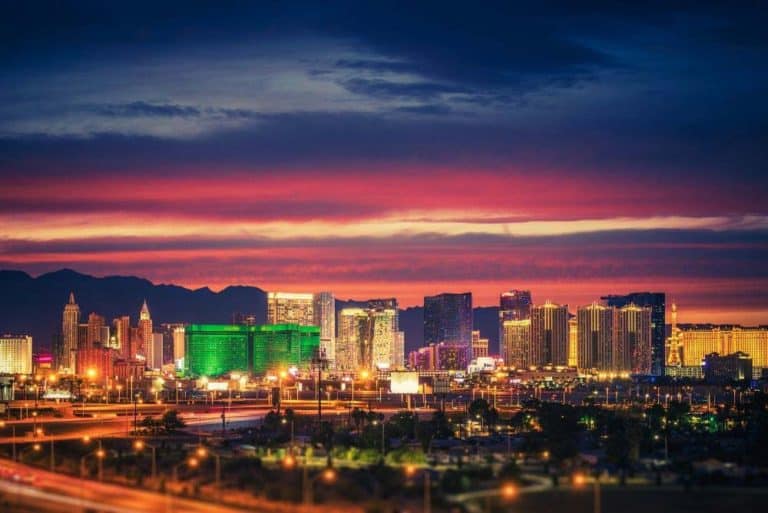What Planting Zone Is Las Vegas (Explained)
Most people are aware that Las Vegas, Nevada, is located smack dab in the middle of a harsh desert landscape. If you’ve got a green thumb, however, you may be wondering, “What planting zone is Las Vegas?”
The United States Department of Agriculture (USDA) names Las Vegas, Nevada as zone 9a and zone 8b in the USDA hardiness zones. Las Vegas grows in zone 11 of the Sunset Climate Zones. But what does all of this mean for you?
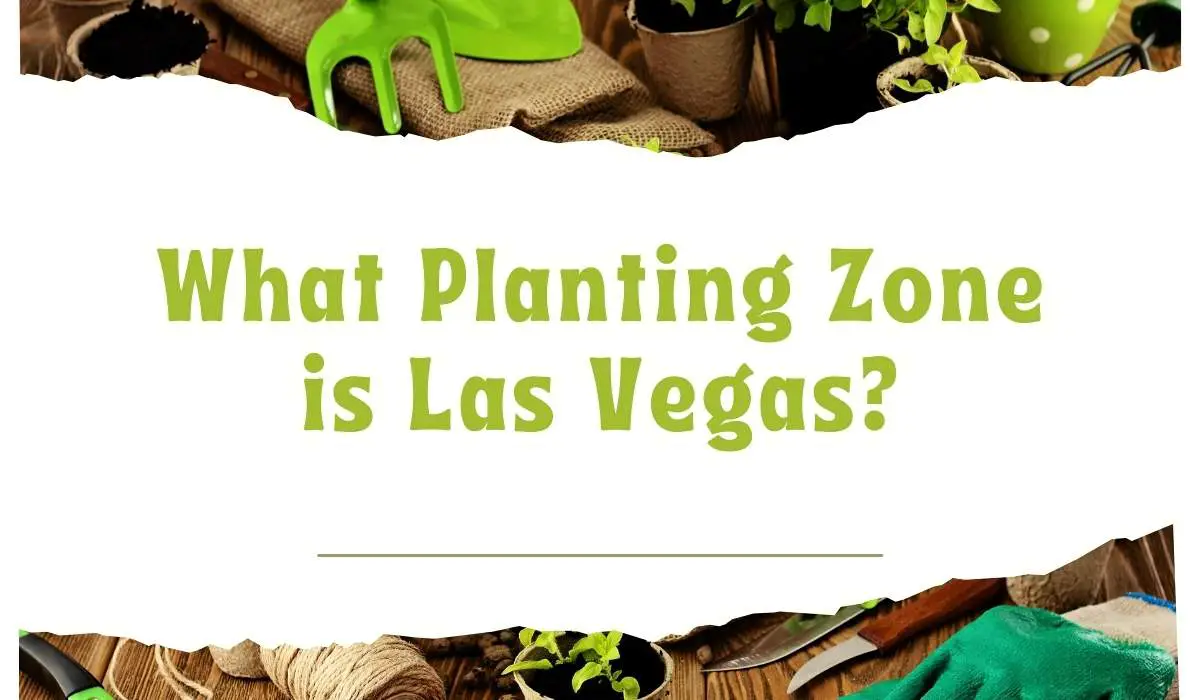
Las Vegas Nevada Plant Hardiness Zones
The Continent of North America is divided into 11 different planting zones on what is known as the USDA Hardiness Zone Map.
On this map, each planting zone, or growing zone has an average winter temperature that is either 10 degrees warmer, or 10 degrees colder than the one next to it, depending on which side the next parcel of land lies.
Las Vegas is in the 9a and 8b plant hardiness zones (see the map below). The zones are determined by extreme minimum temperatures. You you live somewhere besides Las Vegas you find out your specific region in these online maps of USDA hardiness zones, where you can simply type in your zip code and find out which zone you live in.
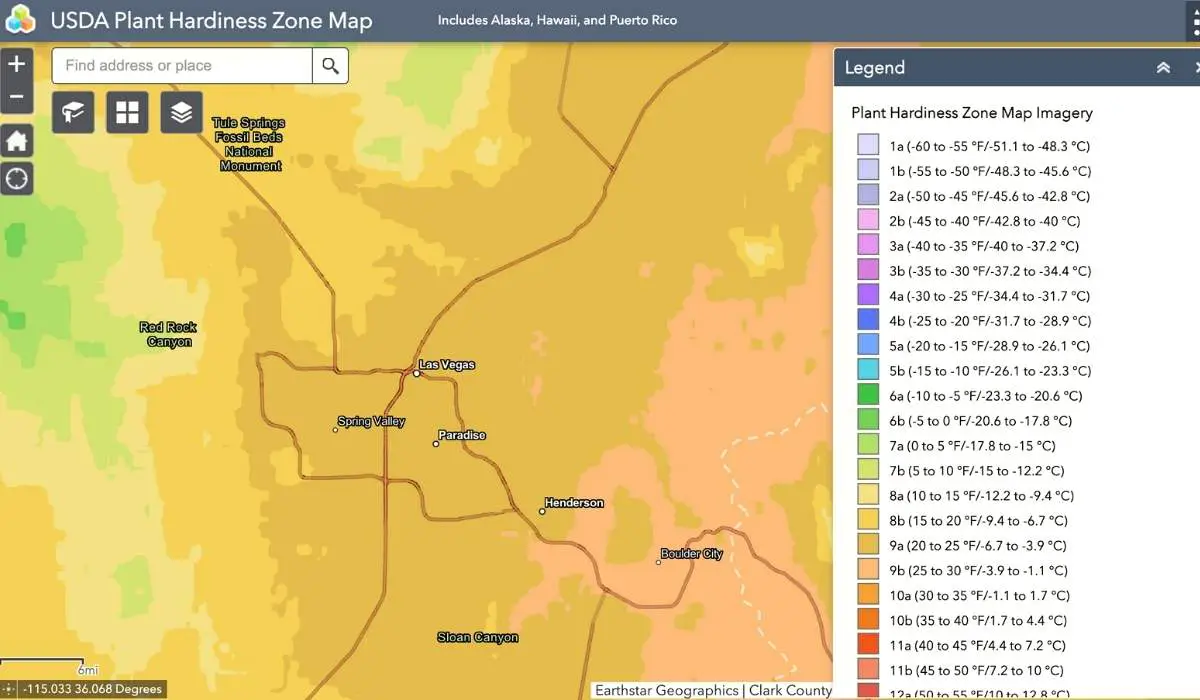
Why Have Plant USDA Hardiness Zones?
Climate zone maps were designed for farmers and gardeners who needed a way to compare the climate where they lived with the climate in which a particular plant would thrive.
By using these hardiness zone maps, these gardeners and farmers could learn which plants might do well in the area where they lived and which plants were more likely to die in their growing zone.
In Las Vegas, the hardiness zone is in a high desert. This means that it sits at a high elevation, often in full sun. High deserts may also have very hot summers, with cold winters bringing snowfall. Rainfall is limited in a high desert zone on the USDA zone map.
Plants that grow in these areas should be able to withstand high levels of bright, full sun, periods of drought and extreme heat, as well as some cold.
Generally, there won’t be much of an opportunity for plants to be planted in the shade, and they may need to withstand wind, low humidity, and poor soil year-round in this USDA zone.
What About the Las Vegas Soil?
As one might imagine, the soil in Las Vegas, NV, is quite rocky and hard. Nutrients and moisture are not in abundance in such USDA hardiness growing zones, which makes planting a garden in Las Vegas a bit more challenging.
In other USDA zones, gardeners will search out soil that has good drainage year-round, but in zone 9a and 8b, it is critical to pick a very porous planting soil and mix it with a good deal of organic composting materials and mulch.
If you want to grow specific plants, you will need to check your USDA map and find out how to prepare the soil for your area.
For example, for those who want to try vegetable gardening in mountainous regions, trees in extreme heat, shrubs that will withstand winter, flowers that can thrive in the sun, fruit, or any other crops, you first need to be aware of the requirements for your region.
Which Plants Grow Well in Las Vegas Plant Hardiness Zones?
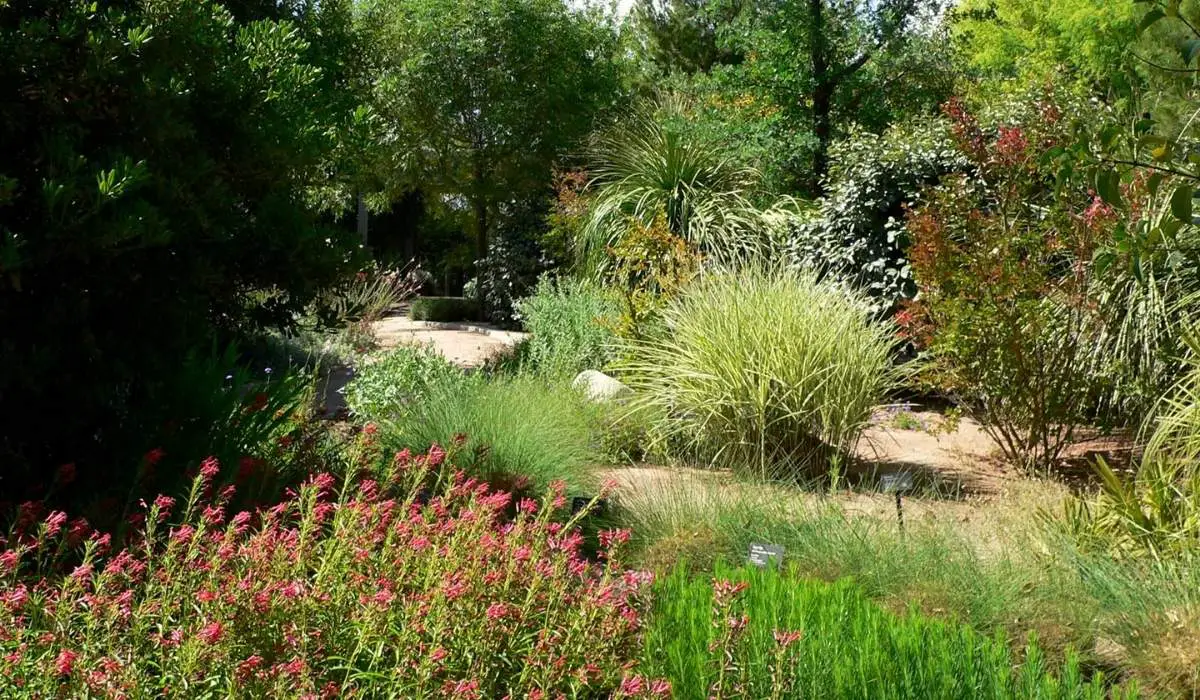
Photo:- commons.wikimedia.org
There are various types of fruit, trees, shrubs, flowers, vegetables, and other crops that you may wish to have in your Las Vegas garden. Perhaps you’d like vegetables such as tomatoes, summer squash, fresh basil, or even your own pumpkins.
Not only will you need to prepare the ground and soil for gardening, but also check to make sure that your choice of plants will grow well in the climate of your region. Here are a few vegetables, herbs, and other plants that can grow well in the Las Vegas, NV region.
- Summer squash
- Onions
- Tomatoes
- Lettuce
- Cucumber
- Watermelon
- Honeydew
- Basil
- Beans
- Cantaloupe
- Asparagus
- Peppers
- Eggplant
- Apricot tree
- Peachtree
- Plum tree
- Certain types of apple and cherry trees, but you will need to be sure that you purchase the type that grows well in zone 9a.
Understanding Your Plant Species is Important For Las Vegas
While most of these plants are great for vegetable gardening in Southern Nevada, it is important to understand each variety that you wish to plant. Information such as what type of soil a plant needs, how much watering or shade will help it flourish, and more can be very beneficial.
For instance, knowing which months to plant which shrubs, flowers, vegetables, etc. could make the difference in how well they survive. As for the ones named above, it is best to plant most of these in March in Las Vegas as the cold winter months have passed, but it hasn’t yet become extremely hot. Always check with your USDA map to learn when is the best time to plant.
Other plants, such as certain trees and shrubs, may also do well in the full sun and freezing weather combination that is prevalent in Las Vegas. It’s all a matter of understanding the plant species and what it needs to survive.
Avocado trees, for example, probably won’t do well in Las Vegas winters due to the chance of freezing temperatures. Tomatoes will need some shade in the mornings and afternoon. Hydrangea will also burn if it does not get enough shade. These facts are more about the plant itself than the USDA zones, so researching specific plants in the Las Vegas area is also crucial.
Pro Tip: As someone who’s purchased many plants for landscaping purposes in Las Vegas, I’d recommend visiting a well-stocked nursery here in town to see what is available. Typically, Las Vegas garden centers will only have plants, trees, cactus, and shrubs available that will do well in Vegas’s harsh climate.
Here are a few Las Vegas Nurseries I would recommend:
Like many nurseries and garden centers, you will find the largest selection of plants to be available during the spring months.
Proper Watering is Essential in this Hardiness Zone
Perhaps one of the biggest challenges about gardening in Las Vegas and southern Nevada, in general, is keeping your garden watered properly. With water restrictions and rising costs, it can become expensive to give your plants enough hydration to survive.
Proper watering, however, is the key to making sure that your flowers, shrubs, herbs, vegetables, and other plants do well throughout the Las Vegas spring and summer.
Learning proper watering techniques can save you money on wasted water as well as prevent plants from freezing in winter or burning in summer.
Soaker Hoses or Drip Irrigation is Best in Las Vegas
It is best in desert climates such as Las Vegas to use a soaker hose or drip irrigation method for watering your plants. If you attempt to water your garden by hand or with a sprinkler system, you will likely end up wasting more water than your plants get.
During the hottest days in the desert climate, spraying water from a hose or sprinkler will only result in a great deal of it evaporating before it ever reaches your garden. That is a great waste of essential water.
Even the water that makes its way to the soil will most likely be burned away before reaching the roots where hydration is so needed. This will, in turn, often cause the plants to be burned as well.
It is best to turn on the irrigation hose for about 30 or 40 minutes during the early morning. This will give the water time to penetrate the soil and soak the roots of the plants thoroughly before the sun is high enough to evaporate it.
Las Vegas Watering Tips
There are a few important tips to remember about using an underground irrigation system or soaker hose in Las Vegas. One is that even small leaks can cause a great deal of water loss and could overwater your garden, so check often to be sure that your hose has no trickles.
Another tip is that you should never water plants in the evening during the winter. While it may be necessary during the hottest parts of the summer months to add an evening watering time, doing so in winter could easily freeze your plants overnight.
Desert Gardening Pests Could Be a Problem in Las Vegas
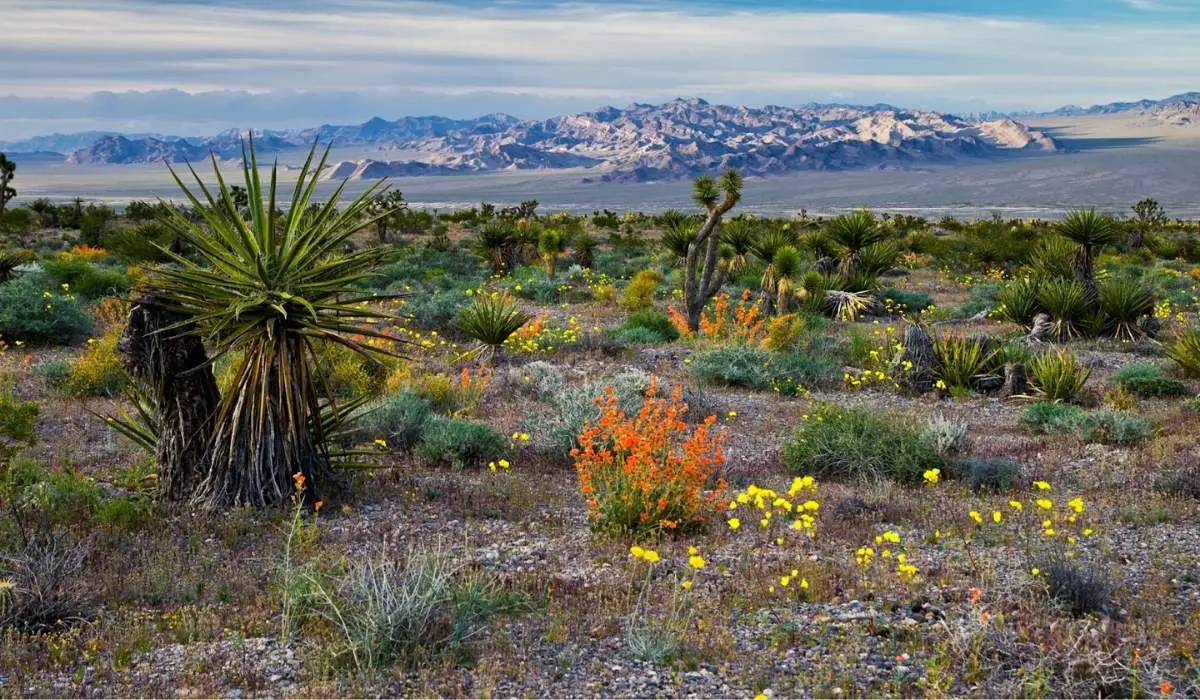
Photo:- wikipedia.org
When gardening in a high desert area, there are a few pests that you will need to look out for and be prepared to battle. These pests can wreak havoc in your garden if allowed to go unchecked. Here are a few to watch for:
- Ants – While these insects aren’t an issue by themselves, their presence could be a sign that other insects may be present, which could harm your plants.
- Leaf Miners – Leaf miners are insects whose larvae will burrow into the leaves of your plants and use them for shelter and food. This includes some species of beetles, moths, and flies.
Once the larva matures, the insects can cause even more damage in your garden. You can usually get rid of these pests with pesticides, and nematodes will help with some, such as beetles. While wasps are sometimes used for this purpose on larger farms and nurseries, you probably don’t want them in your yard. - Sowbugs – These pests usually go after your softer fruits, such as tomatoes and strawberries. They sometimes go unnoticed until the damage is done because they are nocturnal. Pesticides and nematodes can both be effective against these pests.
- Spider mites – Have you ever noticed tiny mites clinging to the underside of your leaves? These are spider mites and can often be found in desert gardens. They are the vampires of the plant world and will destroy your Las Vegas garden by biting into the leaves and sucking the juice out for hydration and food.
General pesticides won’t get rid of these insects, so you must choose one that is specifically for killing spider mites. You may also use ladybugs as natural pest control, as they eat these tiny vampires.
Conclusion
I hope this post on Las Vegas’ planting zone has been helpful in planning and taking care of your desert garden or landscaping. Please feel free to look over our site for more informational articles!




![How to Move to Las Vegas From the UK [Step-by-Step Guide] 8 Moving to Las Vegas from the UK](https://www.feelingvegas.com/wp-content/uploads/2020/06/lasvegassign-768x513.jpg)
![How to Move to Las Vegas From Canada [Step-by-Step Guide] 9 Moving to Las Vegas from Canada](https://www.feelingvegas.com/wp-content/uploads/2020/06/elvistouristlasvegassign-768x513.jpg)
